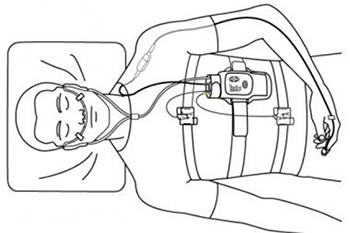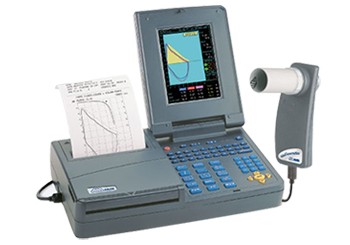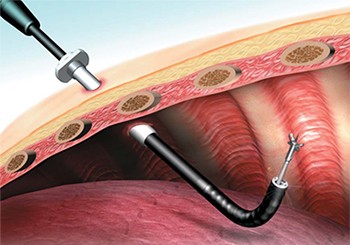Pulmonary tuberculosis (TB) is a contagious bacterial infection that involves the lungs. It may spread to other organs.
Causes
 Pulmonary tuberculosis (TB) is caused by the bacterium Mycobacterium tuberculosis (M. tuberculosis). TB is contagious. This means the bacteria is easily spread from an infected person to someone else. You can get TB by breathing in air droplets from a cough or sneeze of an infected person. The resulting lung infection is called primary TB.
Pulmonary tuberculosis (TB) is caused by the bacterium Mycobacterium tuberculosis (M. tuberculosis). TB is contagious. This means the bacteria is easily spread from an infected person to someone else. You can get TB by breathing in air droplets from a cough or sneeze of an infected person. The resulting lung infection is called primary TB.
Most people recover from primary TB infection without further evidence of the disease. The infection may stay inactive (dormant) for years. In some people, it becomes active again (reactivates).
Most people who develop symptoms of a TB infection first became infected in the past. In some cases, the disease becomes active within weeks after the primary infection.
The following people are at high risk of active TB or reactivation of TB :
- Elderly.
- Infants.
- People with weakened immune systems, for example due to HIV/AIDS, chemotherapy, diabetes, or medicines that weaken the immune system Your risk of catching TB increases if you.
- Are around people who have TB (during overseas travel).
- Live in crowded or unclean living conditions.
- Have poor nutrition.
The following factors can increase the rate of TB infection in a population :
- Increase in HIV infections.
- Increase in number of homeless people (poor environment and nutrition)
- Drug-resistant strains of TB.
Symptoms
The primary stage of TB does not cause symptoms. When symptoms of pulmonary TB occur, they can include :
- Cough (usually with mucus).
- Coughing up blood.
- Excessive sweating, especially at night.
- Fatigue.
- Fever.
- Chest pain.
- Breathlessness.
- Weight loss.
- Wheezing.
Examination and Investigations
The health care provider will perform a physical examination. This may show :
- Clubbing of the fingers or toes (in people with advanced disease).
- Swollen or tender lymph nodes in the neck or other areas.
- Fluid around a lung (pleural effusion).
- Unusual breath sounds (crackles).
Tests that may be ordered include :
- Sputum examination for tuberculosis bacilli.
- Sputum for tuberculosis culture.
- Chest X-Ray.
- Bronchoscopy.
- Chest CT scan.
- Interferon-gamma release blood test, such as the QFT-Gold test to test for TB infection (active or infection in the past).
- Thoracentesis.
- Tuberculin skin test (also called a PPD test).
- Biopsy of the affected tissue (done rarely).
Treatment
The goal of treatment is to cure the infection with medicines that fight the TB bacteria. Active pulmonary TB is treated with a combination of many medicines (usually four medicines). The person takes the medicines until lab tests show which medicines work best.
You may need to take many different pills for 9 months or longer. It is very important that you take the pills the way your Doctor instructed.
When people do not take their TB medicines like they are supposed to, the infection can become much more difficult to treat. The TB bacteria can become resistant to treatment. This means the medicines no longer work.
If a person is not taking all the medicines as directed, a provider may need to watch the person take the prescribed medicines. This approach is called directly observed therapy.
Outlook (Prognosis)
Symptoms often improve in 2 to 3 weeks after starting treatment. A chest x-ray will not show this improvement until weeks or months later. Outlook is excellent if pulmonary TB is diagnosed early and effective treatment is started quickly.
Possible Complications
Pulmonary TB can cause permanent lung damage if not treated early. It can also spread to other parts of the body.
Medicines used to treat TB may cause side effects, including :
- Changes in vision.
- Orange- or brown-colored tears and urine.
- Rash.
- Liver inflammation.
A vision test may be done before treatment so your doctor can monitor any changes in the health of your eyes.
When to Contact a DOCTOR
- You think or know you have been exposed to TB.
- You develop symptoms of TB.
- Your symptoms continue despite treatment.
- New symptoms develop.
Prevention
TB is preventable, even in those who have been exposed to an infected person. Skin testing for TB is used in high risk populations or in people who may have been exposed to TB, such as health care workers.
People who have been exposed to TB should have a skin test as soon as possible and have a follow-up test at a later date, if the first test is negative.
A positive skin test means you have come into contact with the TB bacteria. It does not mean that you have active TB or are contagious. Talk to your provider about how to prevent getting tuberculosis.
Prompt treatment is very important in preventing the spread of TB from those who have active TB to those who have never been infected with TB.
Some countries with a high incidence of TB give people a vaccine called BCG to prevent TB. But, the effectiveness of this vaccine is limited and it is not usually used in the United States.
People who have had BCG may still be skin tested for TB. Discuss the test results (if positive) with your doctor.




